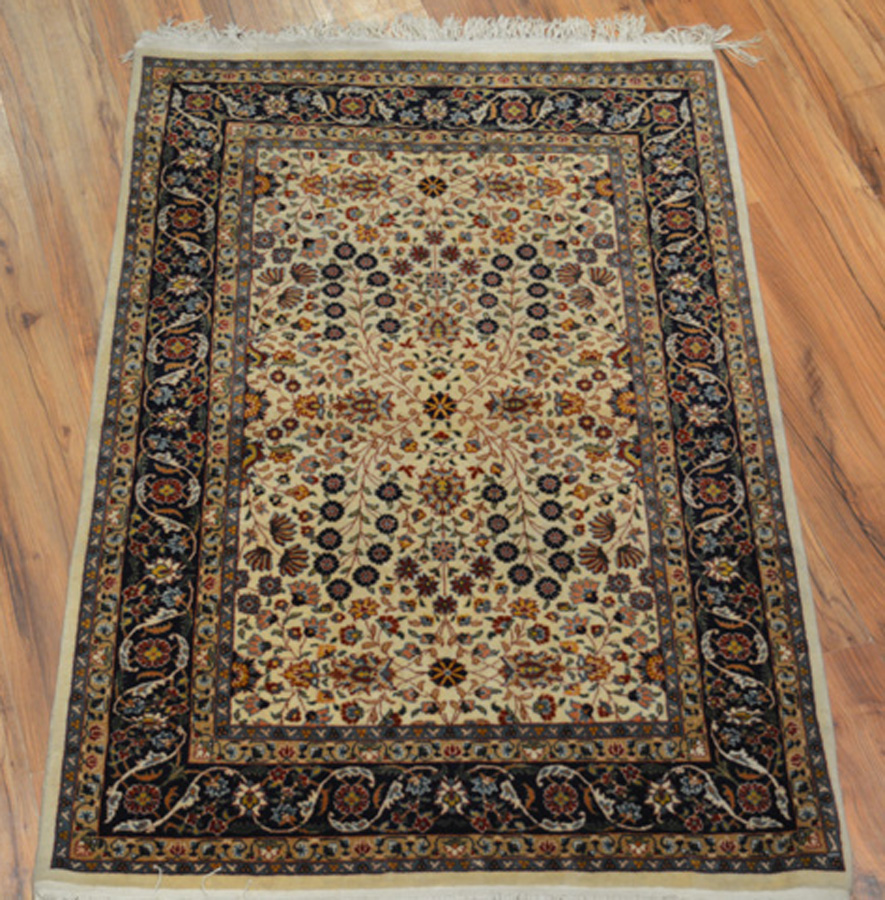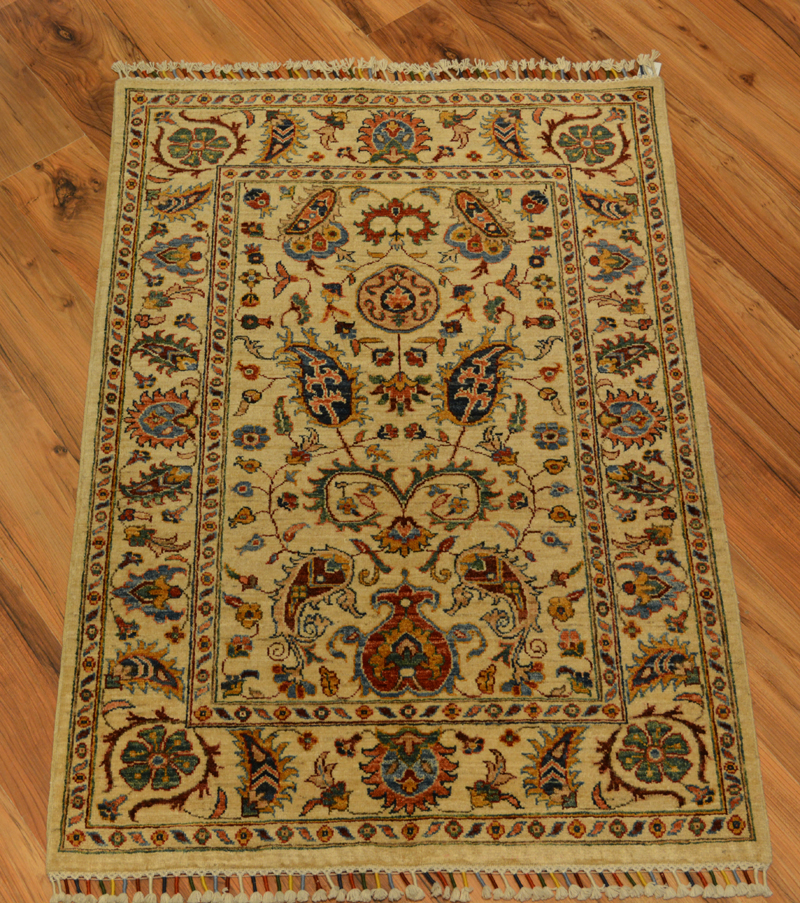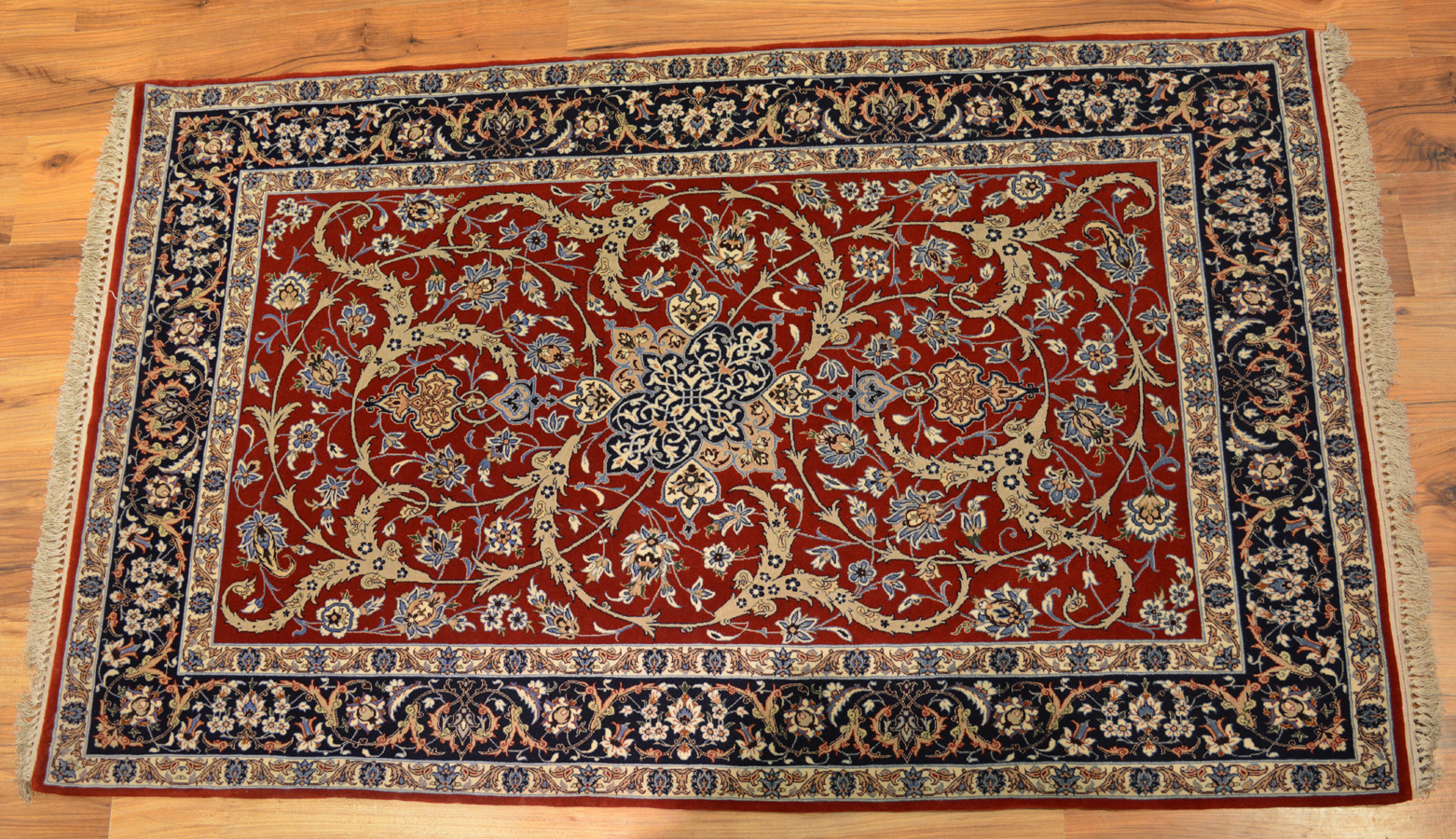Bakhtiari carpet
Size: 1,00m x 1,55m (3,28ft x 5,08ft)
Product code: 1813
Age: New
In the Zagros mountains, west of the city of Isfahan around the city Shahr-e-Kurd, reside the Bakhtiar nomads. Most of them speak Persian or a Lori dialect, while others who live in the Khuzestan province speak Arabic. Bakhtiar men wear wide pants, a round shaped hat and a short tunic, clothes which originate as far back as the Parthian dynasty (200 B.C.- 200 A.C.). The Bakhtiar nomadic headman (khans) have at times had very powerful positions in Persian society. An extensive carpet production area of Chahar Mahal va Bakhtiari absorbs nomads as well as village people of changing origin.
The carpets are sold under the common name Bakhtiar (also Baktiar, Bachtiar and Bakhtiari ), sometimes with a place of denunciation; Boldaji, Feridan or Saman. The carpets are made of durable wool, and are beaten very hard, which makes them thick and solid and they are considered to be among the most durable of Persian carpets. A well-known pattern is the Khesti (garden motif) where the carpet is divided into squares with plants and animals, symbolizing the Persian garden, but also medallions and life tree-motifs occur with influences from the Isfahan carpets.
The best Bakhtiar carpets with the highest knot density are sometimes called Bibibaff.
Description
Bakhtiari carpet
Size: 1,00m x 1,55m (3,28ft x 5,08ft)
Product code: 1813
Age: New
In the Zagros mountains, west of the city of Isfahan around the city Shahr-e-Kurd, reside the Bakhtiar nomads. Most of them speak Persian or a Lori dialect, while others who live in the Khuzestan province speak Arabic. Bakhtiar men wear wide pants, a round shaped hat and a short tunic, clothes which originate as far back as the Parthian dynasty (200 B.C.- 200 A.C.). The Bakhtiar nomadic headman (khans) have at times had very powerful positions in Persian society. An extensive carpet production area of Chahar Mahal va Bakhtiari absorbs nomads as well as village people of changing origin.
The carpets are sold under the common name Bakhtiar (also Baktiar, Bachtiar and Bakhtiari ), sometimes with a place of denunciation; Boldaji, Feridan or Saman. The carpets are made of durable wool, and are beaten very hard, which makes them thick and solid and they are considered to be among the most durable of Persian carpets. A well-known pattern is the Khesti (garden motif) where the carpet is divided into squares with plants and animals, symbolizing the Persian garden, but also medallions and life tree-motifs occur with influences from the Isfahan carpets.
The best Bakhtiar carpets with the highest knot density are sometimes called Bibibaff.









